 Republic of Serbia (2021)
Republic of Serbia (2021)
8×8 Infantry Fighting Vehicle – 1 Prototype Built
In recent years, the Serbian military industry has managed to develop and produce a series of 8×8 wheeled armored vehicles, including the Lazar series. A recent addition to the 8×8 family has been the Lazanski wheeled Armored Combat Vehicle (ACV), demonstrated for the first time in October 2021 at the Partner-2021 military exhibition in Belgrade.
According to some Serbian media news outlets, such as RTS, the prototype of the Lazanski 8×8 is a further development of the Lazar III project, but actually, it is a completely new vehicle that incorporates much better armor protection combined with stronger offensive armament, capable of engaging both ground and air targets. In addition, the vehicle retains the capability of transporting 10 fully armed soldiers. One of the most interesting features of the new ACV is the Russian remotely controlled ‘Kinzhal’ (Dagger) combat module. At the moment, the vehicle is still in the early phases of development.
The author would especially want to thank Alex Tarasov, for helping with this article.

History
Given the Lazanski’s recent public display, the precise development history of this vehicle is not yet available to the public. According to the information revealed at the Partner-2021 exhibition, the Lazanski was developed by the well-known Serbian Yugoimport SDPR company, responsible for designing and manufacturing many modern armored vehicles in recent years. Yugoimport was founded back in 1949, with the intention of acquiring necessary military equipment for the JNA (Jugoslovenska Narodna Armija, Yugoslav People’s Army) from abroad.
After 1953, Yugoimport expanded the scope of its business to the export of domestic military equipment. One of its most successful exports has been the Lazar series. The Lazar (Series I to III) is an 8×8 wheeled armored vehicle designed to be able to transport 3 crew members and 9 soldiers. These were designed to be highly modular and equipped with different weapon outfits. First presented in 2008, they have seen service with the Serbian armed forces and have seen limited export success with countries such as Pakistan.

Initially, the Lazanski project was named after medieval Serbian Emperor Stefan Dušan Silni. It was renamed Lazanski to honor the late military analyst and diplomat Miroslav Lazanski, who died in August 2021.
While Lazanski’s overall design was made by the Yugoimport engineers, some elements, such as the remote-controlled turret, were imported from Russia. Sources do not mention why the Serbian engineers decided to use this weapon system. However, this is not the first example of military-industrial cooperation between Russia and Serbia. Earlier in 2021, Yugoimport sold a batch of Lazar 3 wheeled ACVs armed with Russian-made BPPU turrets to Turkmenistan.


Given the general close cooperation between the Russian and Serbian arms industry, this also should not come as a surprise, as both sides benefit from this mutually reinforcing collaboration. The Serbian Army could receive a new high-tech weapon system without the need to invest in research and development. At the same time, the Russian side could enter new emerging markets thanks to the Serbian brand-new wheeled platform and the fact that the Serbian arms industry is not under the threat of sanctions.
The price of the Lazanski ACV might be between $2 and $2.5 million, depending on the armament and configuration, according to certain unverified sources. The export prospects are unclear at this point, however, it is possible that Serbia might enter new markets with the help of Rosoboronexport, the sole state intermediary agency for Russia’s exports/imports of defense-related and dual-use products, technologies, and services. However, with the sanctions imposed on the Russian Federation following the 2022 invasion of Ukraine, it is unclear how this could affect the Lazanki.
Design
Not much is known about the design and performance, as the vehicle is in its early development phase. However, some limited specifications have been revealed at the Partner-2021 exhibition. According to official sources, Serbia expects to finish trials of the platform by the end of 2022. While the Lazanski shares some similarities with the Lazar 3, it also incorporates a number of improvements.
Engine and the Chassis
The Lazanski ACV hull measures 8 m long, 3.2 m wide, and 2.6 m high. Overall height including the turret is 3.6 m. Since the platform could be equipped with modular armor protection, the weight would vary. The lightly armored version weighs 26 tonnes, while the weight of the Lazanski ACV fitted with heavy armor could reach up to 36 tonnes. The ACV does not have amphibious capabilities and features a hydro-pneumatic suspension.
The Lazanski is powered by a 711 hp Caterpillar C13 engine connected to a six-speed Allison 4000SP automatic transmission. The engine itself is placed on the front right side of the vehicle. The design of the running gear also incorporates driving axles produced by the Finnish company SISU, and a transfer gearbox by Katsu.
The Russian military blog bmpd, which is part of the CAST think-tank, points out that the automotive part of the Lazanski is very similar to Finnish Patria AMV XP.


Crew, Hull, and Internal Layout
The Lazanski’s hull is welded, made of armored steel, and has a relatively simple shape featuring flat rear and sides and sloping-down frontal plate. The internal layout is typical for basically all modern armored vehicles of this type, with an engine compartment at the front-right, driver’s compartment at the front-left next to the engine, the combat compartment in the middle, and, finally, the infantry dismount compartment at the back of the vehicle.
The engine is fully enclosed but has a few access hatches with ventilation grilles that the crew can use for maintenance.
Crew members can access their positions through the two hatches on the top of the hull or through the passage between the fighting compartment and the infantry dismount compartment. The crew could use the same passage as an emergency exit, allowing the crew to leave the vehicle through the rear ramp in case the hatches at the front are damaged or under enemy fire. Each crew hatch is provided with three vision blocks. Some elements of the hull are covered by an anti-slip coating. Dismounts are supposed to leave the vehicle by using the rear hydraulic ramp.
In order to fully operate the Lazanski, a crew of three is needed. This includes the commander, gunner, and driver. The driver is located on the front left side, with the commander’s and the gunner’s seats placed behind. To the rear is a large infantry dismount compartment where 10 fully armed soldiers can be stationed in shock-mitigating seats. The soldiers’ seats are divided into rows of five seats on each side, which are positioned opposite each other.
In order to provide the crew with an excellent field of view, the Lazanski is equipped with six surveillance infrared cameras which provide a full 360° field of vision. In addition, the driver has two mirrors, one placed on each side of the vehicle.
According to bmpd, the Lazanski is also equipped with several subsystems, such as an air conditioning unit, intercom, NBC protection, a navigation system, and an automated battle management system.

While other Serbian designs, such as the Lazar, have side doors and firing ports for dismounts, the Lazanski does not.

Turret and Armament
The Lazanski is armed with the ‘Kinzhal’ Russian-made remotely operated and controlled combat module.
The ‘Kinzhal’ (Dagger) is a further development of the AU-220M ‘Baikal’ RCWS. Both modules were developed by CRI Burevestnik, which is part of Uralvagonzavod.
The standard armament of the ‘Kinzhal’ consists of a 57 mm 2A91 (BM-57) autocannon with eighty ready-to-fire 57 x 348 mm rounds in the internal storage. The secondary armament consists of the coaxial 7.62 mm PKTM machine gun with 1,000 stored rounds and smoke dischargers. Additionally, ‘Kinzhal’ can be fitted with two 9M120 Ataka-M ATGMs. However, the exhibited prototype had no ATGMs installed.
‘Kinzhal’ includes a sophisticated fire control system (FCS) with day and night capability and a panoramic sight, but the exact specifications are not known. Typical ammunition load for the 2A91 autocannon consists of HE-T (UOR-281U) and AP-T (UBR-281U) rounds. Also, the manufacturer plans to develop a 57 mm programmable HE round and guided round for use against aerial targets, such as helicopters and UAVs.
The 2A91 57 mm autocannon originates from the S-60 autocannon used on the ZSU-57-2. The 2A91 retains the capability to use older rounds.
According to the manufacturer’s information, the turret weighs 3,850 kg, including elements installed inside the hull. Some sources, such as the Russian bmpd, say that the combat station fitted on the prototype exhibited at the Partner-2021 weighs only 3,600 kg.
This difference probably appeared because the turret was installed without some elements, such as Ataka ATGM launchers, or the prototype was equipped with a full-scale mock-up of the ‘Kinzhal’ RCWS.
Since the Lazanski’s design is modular, the vehicle could be quite easily fitted with a wide variety of turrets and weapon stations of either domestic or foreign origin. For example, Serbian news outlets mentioned that the idea to arm Lazanski with a Turkish-made MIZRAK-30 turret is under consideration.


Main specifications for the Kinzhal RCWS. Source: UVZ
| Primary armament | 57 mm 2A91 (BM-57) autocannon |
| Rate of fire, rpm | 80 |
| Initial velocity, m/s | 1,000-1,500 |
| Armor piercing at 1,500 m, mm | 100-120 at 60 degrees |
| Ammunition (ready to fire), pcs | 80 |
| Elevation, degrees | -5 to +60 |
| Traverse. degrees | 360 |
| Secondary armament | 7.62 mm PKTM machine gun |
| Ammunition (ready to fire), pcs | 1,000 |
| Rate of fire (PKTM), rpm | 700-800 |
| Total weight of the RCWS, kg | 3,850 * |
* Including the elements installed in the hull
Armor and Protection
The hull of the prototype is constructed from steel with additional ceramic armor. According to the manufacturer, the ballistic protection of the frontal arc reaches Level 5 STANAG 4569A, meaning it can withstand 25 mm projectiles from 500 m and 155 mm shell splinters. The ballistic protection of the sides and rear reaches STANAG 4569A Level 3, and is able to withstand 7.62 mm AP bullets from any distance. According to the designers, the effectiveness of this armor was examined and tested in Germany and Israel.
In addition, Yugoimport is developing an appliqué armor kit able to raise the ballistic protection to STANAG 4569A Level 6, which means the ability to withstand 30 mm APDS rounds from 500 m distance.
In terms of blast protection, the Lazanski has a V-shaped bottom and can sustain blasts of up to 10 kg of explosives (STANAG 4569B Level 4a/b).
Additionally, the Lazanski, in the configuration demonstrated at the Partner-2021 exhibition, was provided with several smoke dischargers for self-protection.

Future and Conclusion
The Lazanski is certainly an interesting design coming out of the relatively small Serbian military industry. According to Serbian media and its constructor, the Lazanski is a high-tech modern armored vehicle with huge military potential in domestic use or as an export product. Besides it, the Serbian military industry achieved some export success with the Lazar III and Nora series of self-propelled guns.
Given its experimental nature, it is hard to predict its fate at this point. However, it is possible to make several assumptions.
Firstly, the ACV is not in its final shape, and the development of the Russian Bumerang platform, which was constantly delayed, may offer a cautionary tale on how the development might take more time than is anticipated. Obviously, many changes and improvements are to be expected in the near future. These would probably be mainly focused on increasing its survivability and various additional equipment.
Secondly, given that the platform is designed on a modular basis, we can expect that various variants of the Lazanski will appear. In the future, the Lazanski might start a whole new family of combat and auxiliary armored vehicles, including APCs, ARVs, self-propelled artillery systems, C2, or CBRN variants, but this remains to be seen.
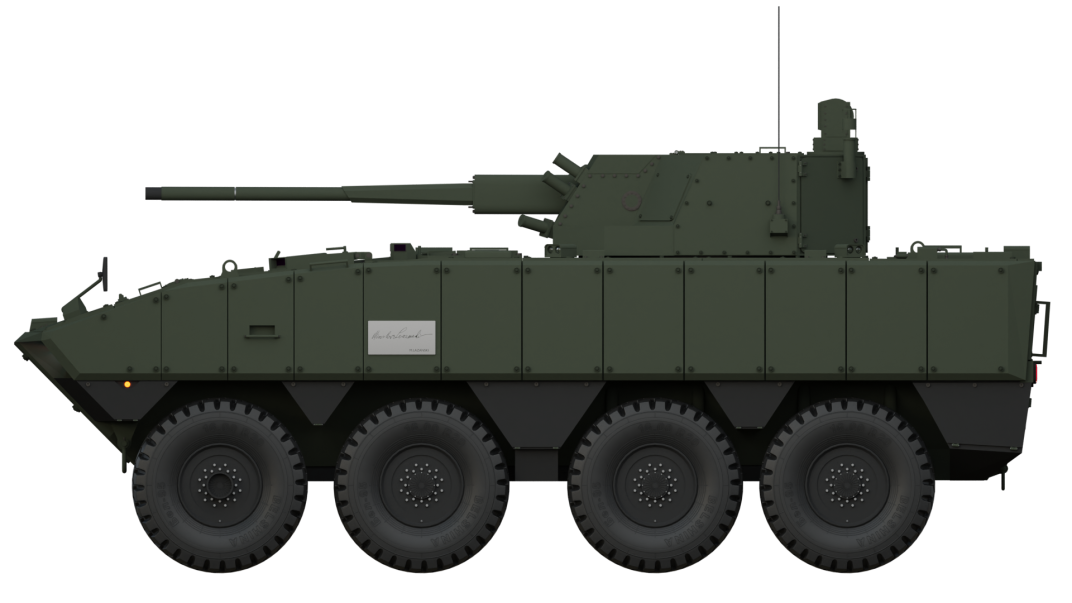
Ilustration made by Phantom_25_Sniper
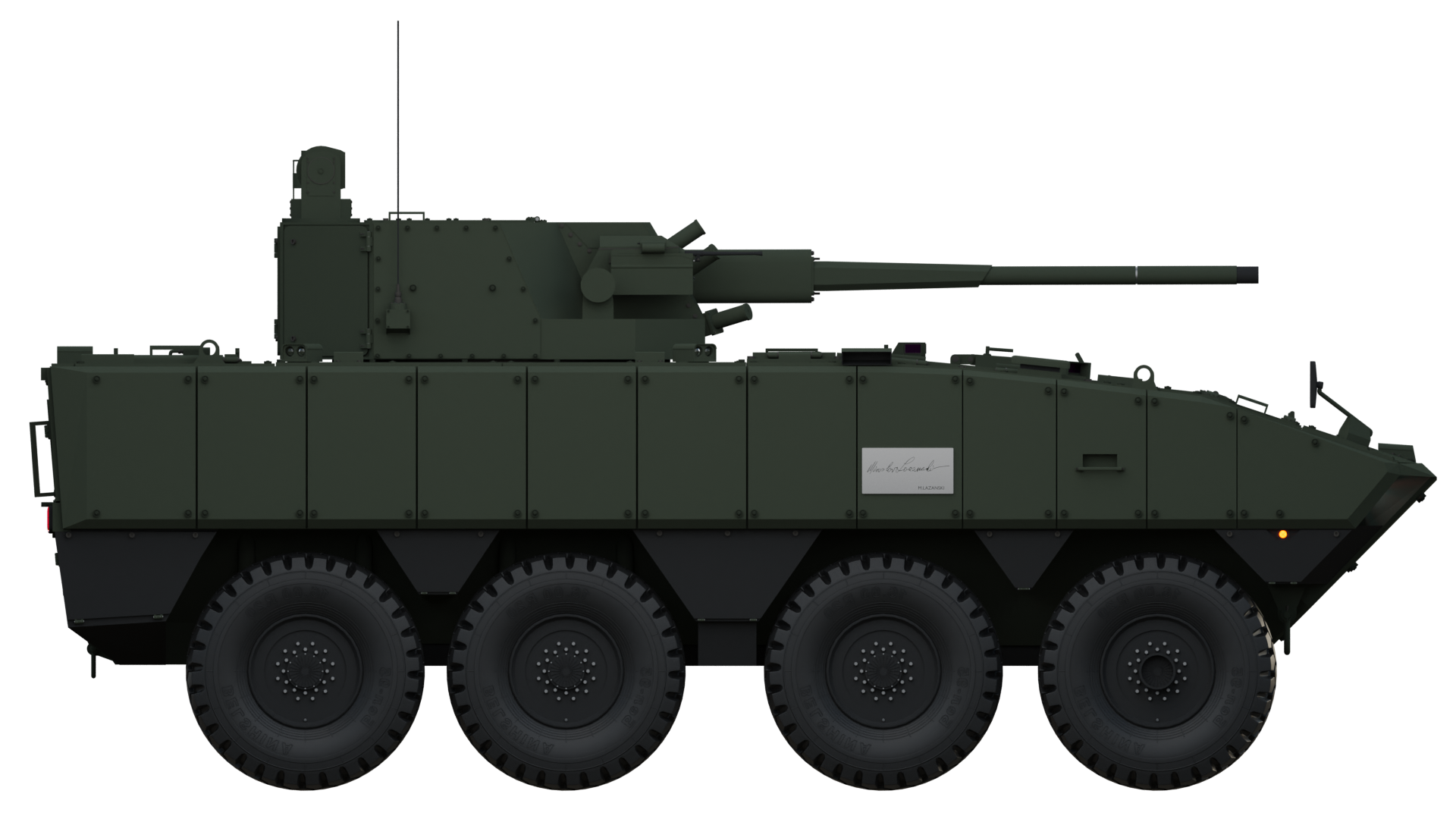
Ilustration made by Phantom_25_Sniper
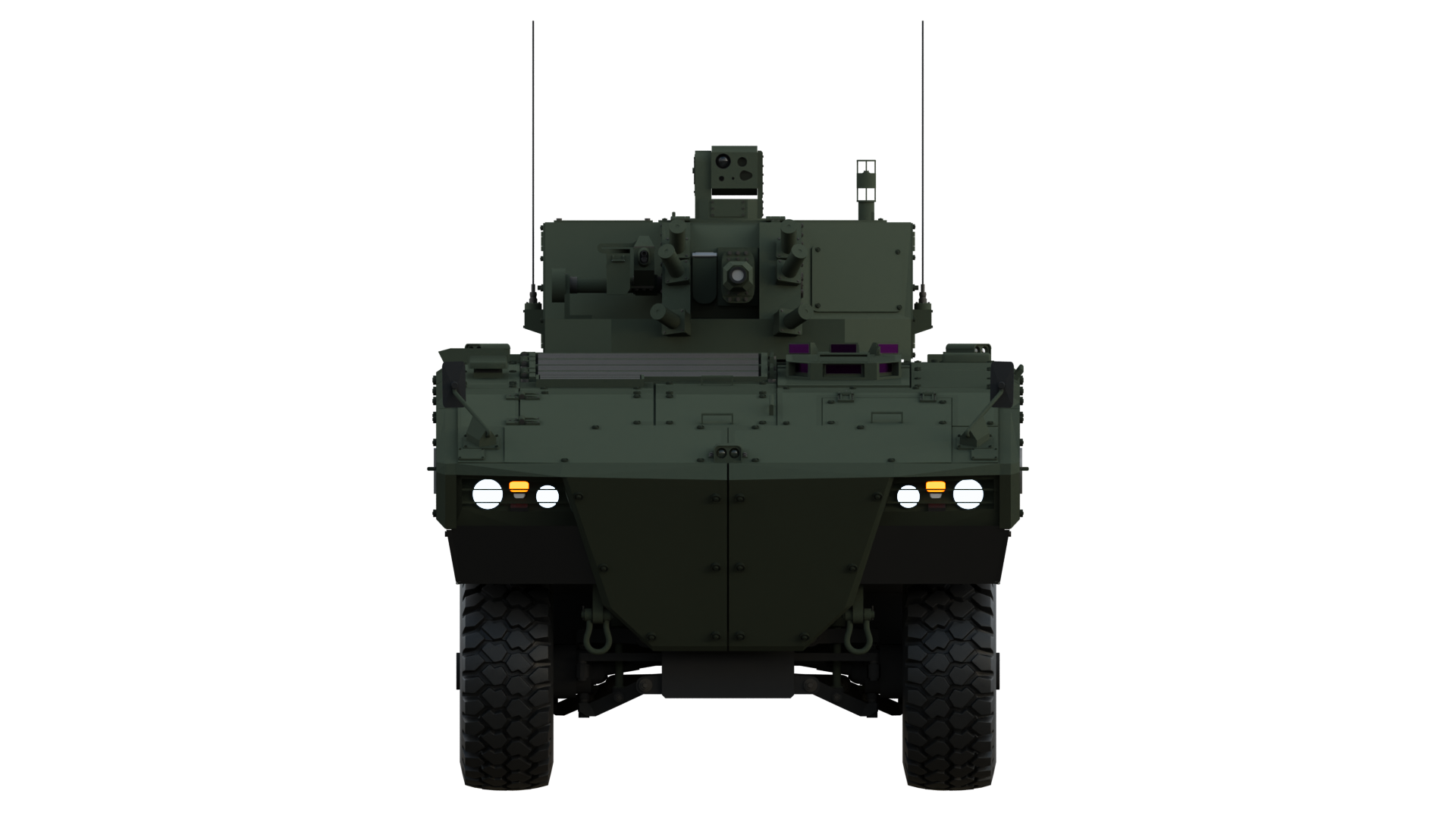
Ilustration made by Phantom_25_Sniper
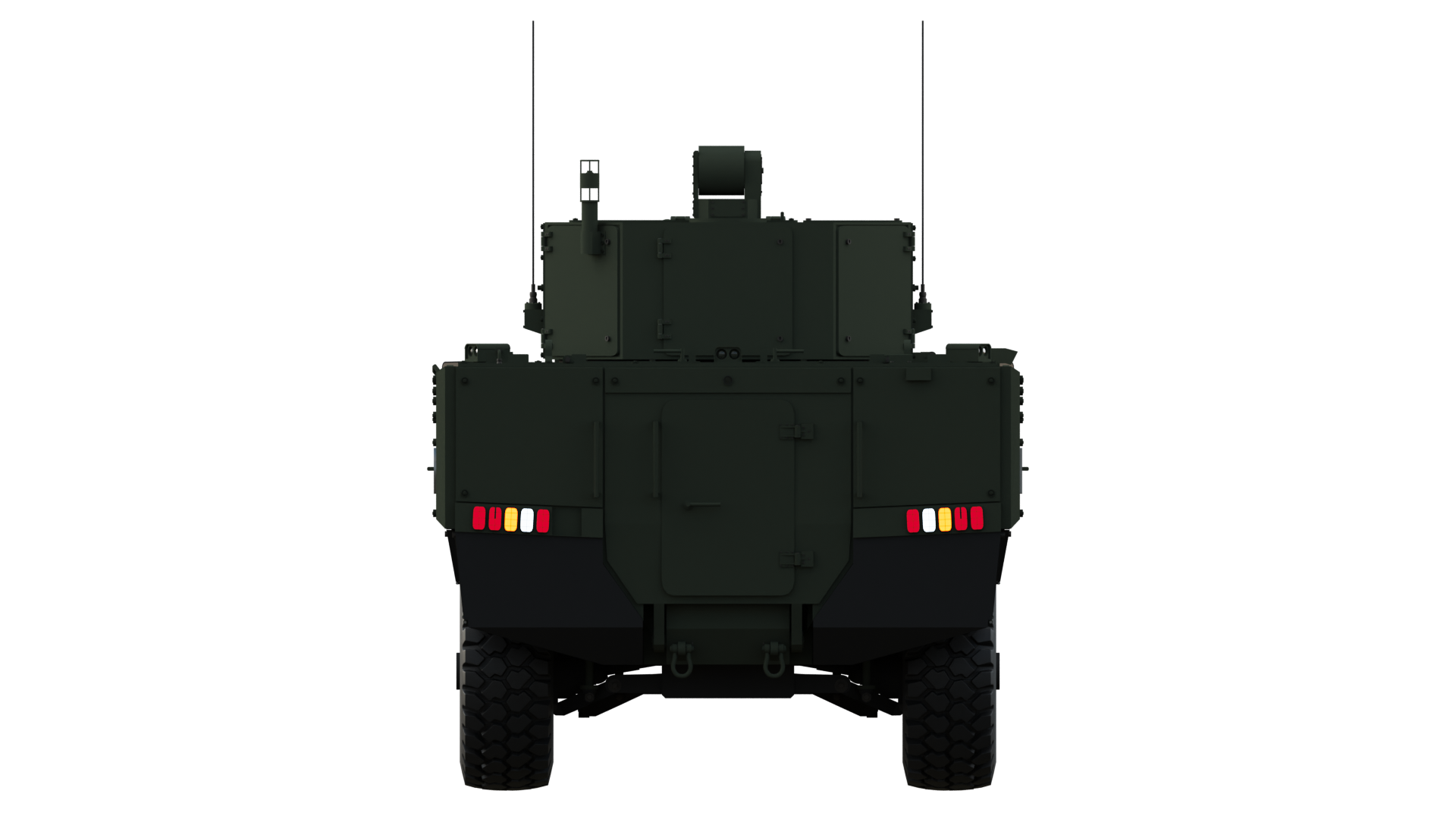
Ilustration made by Phantom_25_Sniper
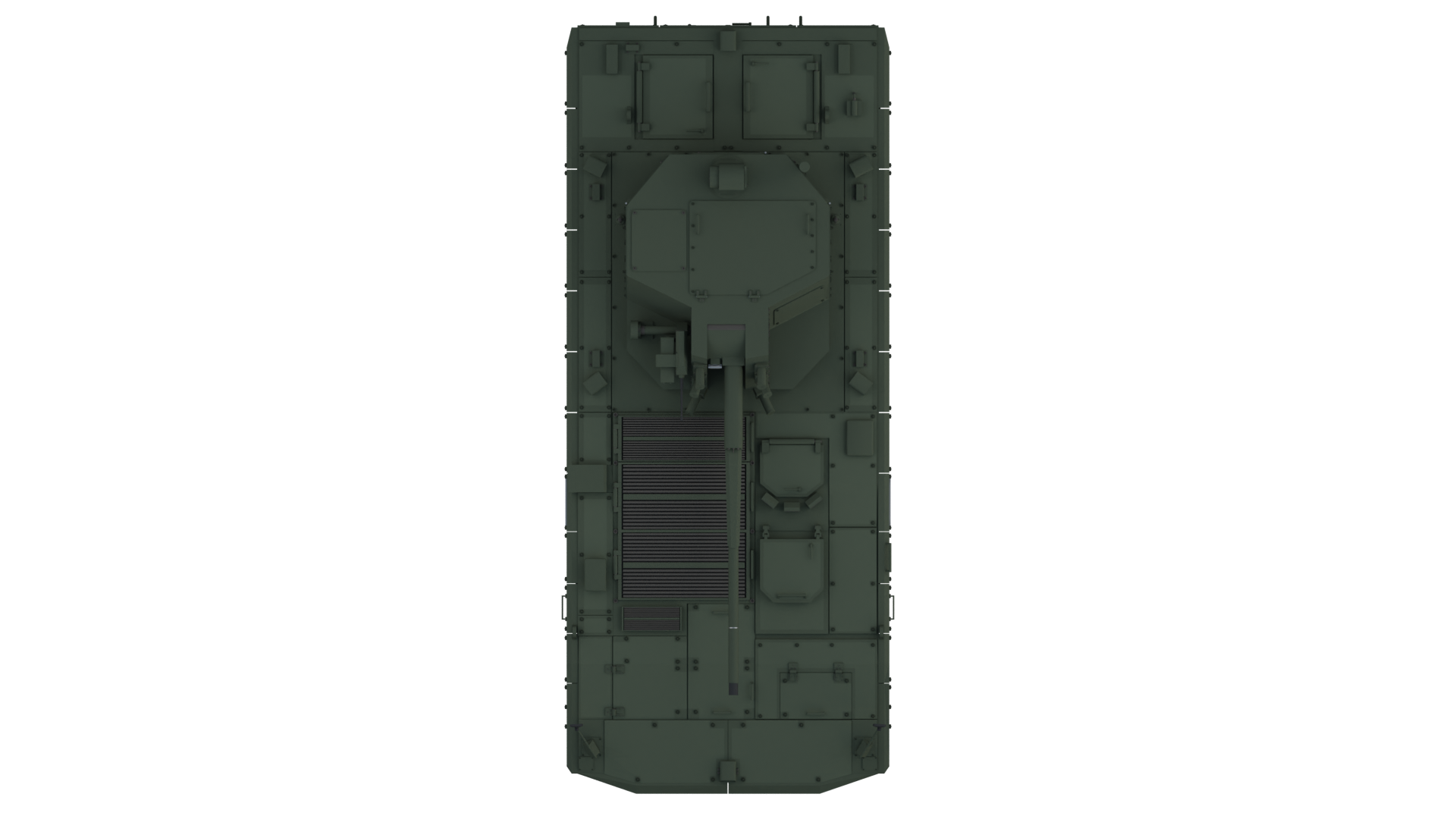
Ilustration made by Phantom_25_Sniper
TechnicalSpecifications |
|
| Dimensions (l-w-h) | 8 x 3.2 m x 2.6 m |
| Total weight, battle-ready | 26 to 36 tonnes |
| Crew | 3 (Commander, Gunner, and Driver) plus 10 Soldiers |
| Propulsion | 711 hp Caterpillar C13 engine |
| Primary Armament | 57 mm 2S91 gun |
| Secondary Armament | 7.62 mm 6P7K machine gun |
| Elevation | -5° to +°60 |
| Armor | Unknown |
Sources
- R. Dragovic (2021) Magazine Kaliber
- https://www.yugoimport.com/
- http://www.army-guide.com/eng/product5170.html
- https://www.burevestnik.com/products_engl/au220m.html
- https://www.armyrecognition.com/partner_2021_news_online_show_daily_defense_exhibition_serbia/yugoimport_unveils_new_lazanski_8x8_armored_vehicle_armed_with_57mm_cannon.html
- https://www.b92.net/biz/vesti/srbija/mocni-lazanski-privukao-najvise-paznje-sve-o-oklopnim-premijerama-sajma-naoruzanja-1940325?version=amp
- https://www.rts.rs/page/stories/sr/story/125/drustvo/4547265/lazanski-oklopno-vozilo-predstavljeno-sajam-partner-2021.html
- https://topwar.ru/159380-boevoj-modul-kinzhal-dalnejshee-razvitie-bajkala.html
- https://bmpd.livejournal.com/4414404.html
- https://www.shephardmedia.com/news/defence-notes/new-equipment-breaks-cover-at-turkmen-military-pa/
- https://www.shephardmedia.com/news/landwarfareintl/next-steps-unclear-for-new-serbian-ifv/
- https://www.janes.com/images/default-source/news-images/bsp_7373-idr-14592.jpg?sfvrsn=d9372a0b_2
- https://www.b92.net/biz/vesti/srbija/mocni-lazanski-privukao-najvise-paznje-sve-o-oklopnim-premijerama-sajma-naoruzanja-1940325?version=amp
- https://t.me/bograta/6715
- https://www.youtube.com/watch?v=FLtOuWZROaU

5 replies on “Lazanski Armored Combat Vehicle ”
Guys, if you use renderers, pls, fix the lighting. From some angles, dark renderers are obtained.
And here: https://tanks-encyclopedia.com/105mm-gun-tank-m1-abrams-improved-performance-m1ip/
This is an 3d model his very hard to use more lighting probe because will create some fake and very hard shadows and they are very nasty + This model use 5 directional lights + 360 HDRI image to create more realistic shadows and contrast to the colors + if some one of directional light his too powerfull it will create colors will be much lighter .
M-84A tanks in Slovenia, from 1st armor Brigade in Vrhnika, where left by agreement with Slovenian authorities and Yugoslav Army after withdraw of Yugoslav army, they were not captured… and from Jane’s, Serbian Lazar or his derivations can’t stand 20mm cannon, normal rounds, hits on side armor but only 14.5 or 12.7mm HMG hits
Hello Philipe, I do not known what does the M-84 had to do with this article.. For the armor protection the sources are mentioned under the article.
When u scroll site last article is about M-84, they are in chain…